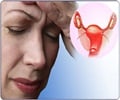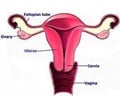Use of hormone replacement therapy (HRT) increases the risk of gallbladder disease but the effects are less with HRT given in skin patches or gels compared with HRT given orally - Study
Use of hormone replacement therapy (HRT) increases the risk of gallbladder disease but the effects are less with HRT given in skin patches or gels compared with HRT given orally, according to a study published on BMJ.com today.
HRT is regularly prescribed to women suffering from the effects of the menopause. Approximately 1 million UK women were taking HRT in 2005 and the majority were taking it orally.Gallbladder disease is common in post-menopausal women and it is well known that use of HRT increases the risk. But until now there has been no assessment of whether this risk varies according to the method of administration or type of HRT a woman is taking, such as skin patches or gels compared to oral treatment.
Dr Bette Liu and colleagues from the University of Oxford reviewed data from the Million Women Study involving over 1.3 million UK women aged 50–69 years. They report that after following the women for an average of 6 years, 19 889 women were admitted to hospital with gallbladder disease and 17 190 (86%) had to have their gallbladder removed (cholecystectomy).
They found that compared to women who had never taken HRT, all women using HRT had an increased risk of developing gallbladder disease. Importantly, they also found that women taking the HRT in a patch or gel form were substantially less likely to be admitted to hospital for gallbladder disease and less likely to have their gallbladder removed than the women taking HRT in the form of tablets.
Hospital admission rates per 100 women over five years for cholecystectomy were 1.1 for women who had never used HRT, 1.3 for users of the patch or gel form of HRT, and 2.0 for the oral form of HRT.
The increased risk of gallbladder disease gradually decreased after use of HRT stopped. However, 10 years after stopping, the risk remained greater than in women who had never used HRT.
Advertisement
“For women who choose to use hormone replacement therapy, one cholecystectomy could be avoided for every 140 users of transdermal therapy rather than oral therapy over a five year period”, they conclude.
Advertisement
LIN/K














